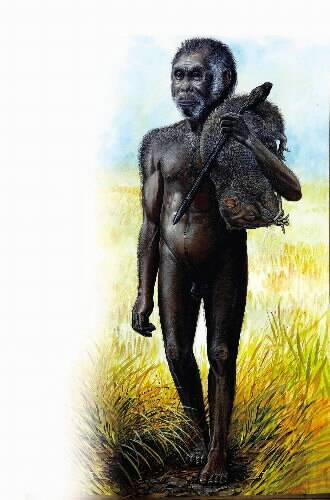

Evidence has emerged that a mini-sized species of humans may have lived on the Indonesian island of Flores up to two million years ago, University of Wollongong scientists say.Nicknamed the "Hobbit" due to its diminutive size (97cm), the species was previously thought to have inhabited the island up to 880,000 years ago.However the discovery of stone tools sealed between one million-year-old volcanic deposits and bedrock dated at 1.8 million years is set to cause a stir in archaeological circles.UOW researcher Dr Adam Brumm was part of the joint Australian-Indonesian team that discovered the tools buried deep in the Soa Basin on Flores in 2005 and only recently dated by Danish scientists.Dr Brumm said the evidence shed new light on the arrival of the hobbit's ancestors on the island, lending weight to theories the pint-sized hominid's forebears first set foot on the island as early as two million years ago. He said there was a strong possibility tools had been used at the site much earlier but that sediment had not been deposited on the bedrock for a period of 800,000 years."This means that if humans were present on Flores significantly earlier than one million years ago, any evidence they may have left behind would not have been preserved," he said."Effectively we have no idea how long Flores has been occupied."University of Wollongong researchers were key members of the team which first discovered the tiny fossilised remains of the previously unknown hobbit-like species.Standing under a metre tall, weighing less than 30kg and with a brain the size of a grapefruit, Homo floresiensis was hailed as one of the most significant hominoid discoveries of the past century.With the remains dated at around 18,000 years old, they proved that modern man had in fact lived at the same time as another human-like species descended from a very early common ancestor.But archaeologists have had to defend their find, other academics criticising the hobbit as nothing more than a deformed Homo sapien.A UOW team is expected to return to Flores in June to search for more evidence to support early colonisation theories."It's anyone's guess what we could find," Dr Brumm said. Discovery of a scientific wonder
Subscribe now for unlimited access.
$0/
(min cost $0)
or signup to continue reading

